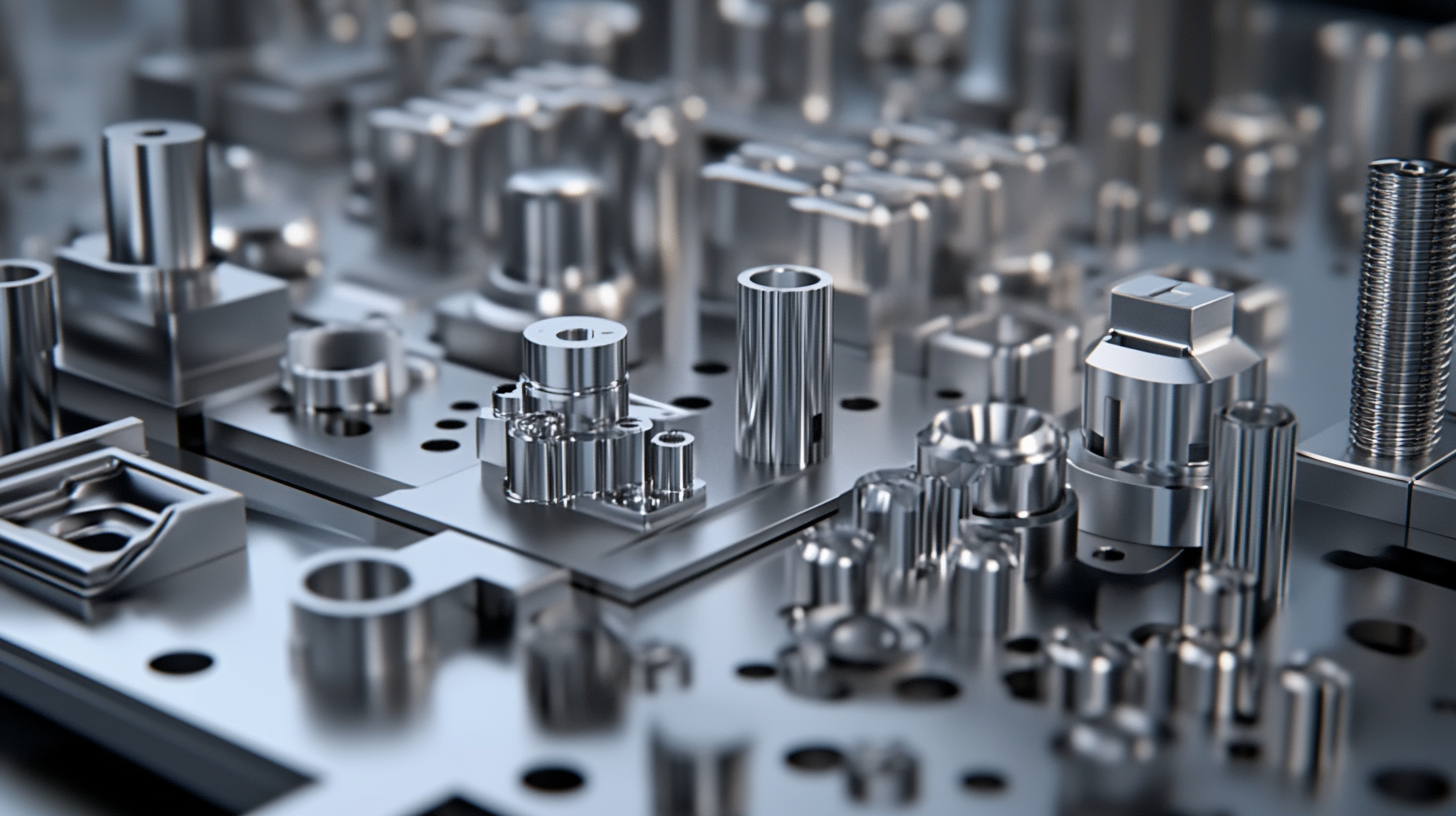Innovative Industry Applications of Hot Isostatic Pressing Transforming Manufacturing Processes
Continuously changing is the landscape of manufacturing, something which is made even more dynamic by modernization and the creative search for improvement in efficiency. The futuristic process making massive ripples in the manufacturing domain is Hot Isostatic Pressing, which is nothing else but a process that drives high temperature and most probably very high pressure into a material to change it, especially with respect to its mechanical properties. This process is very important for cases in industries that are built on mechanical properties such as precision strength and reliance, particularly as seen in the aerospace, automotive, and medical sectors. As all companies fight to maximize their throughput in line with the increased quality standards brought about by HIP, such technology promises to change the game in traditional manufacturing.
This blog will look into applications where Hot Isostatic Pressing is indeed making waves in the innovative industry and how such technology is changing the considerations manufacturers would have given to process materials. It would review such case studies where HIP contributed to achieving considerable improvements to product high-end quality and performance levels while discussing the infusion of this technology into numerous manufacturing cycles. The purpose is to highlight and demonstrate how beneficial and flexible the Hello Industry Process can be, bearing in mind that it will be central towards the future of manufacturing and competitiveness across industries.

Emerging Trends in Hot Isostatic Pressing for Aerospace Component Manufacturing
Hot Isostatic Pressing (HIP), a revolutionary process technology, has made strides in the aerospace industry where the manufacture of critical components is embraced. As most recent industry analysis stated, the introduction of HIP processes means superior material properties, affording manufacturers to manufacture components with superior mechanical strength and durability. This technology is especially significant in the high demand place involving aerospace applications where materials subjected to a large variety of high-temperature and corrosive environments are of even greater importance. The coeval design of advanced components and 3-D printing initiated by companies such as Sintavia will continue to make the increasing recognition of the mode of HIP in efficiency and performance optimizations. Reports now show a massive shift to HIP as a standardized processing modality in aerospace manufacturing, continued growth being expected on account of its efficacy in reducing the occurrence of porosities occurrence in materials and greater yield strength. The presence in the new advanced materials such as silicon nitride touted for efficiency under extreme conditions further exhibits the compatibility of HIP concerning the next-generation composite materials. So exciting is the blend of HIP with exciting technologies such as 3D printing. Over time, as more and more companies embrace sophisticated and automated manufacturing, HIP is expected to transform itself into a major enabler of design freedom, reduced lead times, and even the possibility of producing complex geometries that, previously, could not have been manufactured. Probably, the continued evolution of the technology will play a key role in developing the future aerospace components and, thus, lighter, stronger, and more efficient aircraft designs.

Enhancing Material Properties: The Impact of HIP on Advanced Alloys and Composites
Hot Isostatic Pressing has made an enormous impact in the manufacturing world, especially in properties of advanced alloys and composites. As per a report published by Research and Markets, the global market for HIP is anticipated to touch $1.43 billion by the year 2026, with a compound annual growth rate (CAGR) of 6.5%. This growth trend serves to validate the increasing recognition of HIP as a process that plays a major role in enhancing material performance in life-critical applications.
Perhaps one of HIP's greatest impacts has to do with its ability to remove porosity from materials, thus improving mechanical properties such as tensile strength and fatigue resistance. At present, various industry sources indicate that titanium alloys treated in HIP can show up to a 40% increase in tensile strength compared to non-HIP-tested material. In addition, HIP also finds major applications in the processing of composite materials in achieving uniform density and good interface bonding, which will definitely boost performance under extreme conditions.
Aerospace and automotive industries are two major sectors reaping the advantages of HIP technology. A study carried out by the American Society for Metals revealed that manufacturers employing HIP in production reported reductions in failure rates in components by more than 30%. Increased durability contributes not only to safety but also to the significant reduction of maintenance costs, making HIP a precious technique to allow manufacturers to innovate and secure product reliability.

Cost Efficiency Through Hot Isostatic Pressing: Reducing Waste in Production Processes
The manufacturing environment is changing rapidly, and one technology at the forefront of these changes is Hot Isostatic Pressing (HIP). The technique ensures that very high temperatures and pressure are uniformly applied resulting in huge improvements in the material characteristics. The enormous reductions in wastage in the production process provide some of the best savings for the manufacturer and hence some of the most attractive properties for HIP.
Thus, HIP densifies materials and seals pores, which not only enhances the mechanical integrity of the products but also maximizes the yield of raw material. Traditional processes are fodder for wastage, with machining remnants or actual defects crippling their viability. HIP reduces losses by using these near-net-shape components that have little post-processing, thus decreasing the overall consumption of materials. These general costs along with the use of less material in the production cycle provide an added advantage for environmental acceptability.
HIP also allows many advanced materials that were formerly considered too difficult to process to be utilized. This means that pooling acceptable processing methods for a given material could give manufacturers the freedom to design with it as they like, without fear of causing excessive wastes. The very adoption of this process into manufacturing is expected to address the economics and drive innovations. As industries continue with the adoption of HIP technology, the potential for cost savings and reduction in waste generation becomes enormous, leading the way to a more agile and sustainable manufacturing capability.

Game-Changing Applications of HIP in Medical Device Manufacturing and Biocompatibility
Hot Isostatic Pressing (HIP), is changing the face of medical device manufacturing and improving the biocompatibility of materials used in implantation and surgical instruments. A recent MarketsandMarkets report suggests that, by 2025, the global medical devices market will reach US$612 billion, a great deal of which is attributed to the evolution of manufacturing techniques. HIP stands at the very heart of increasing the density and integrity of medical components; thus, decreasing contamination risks in critical applications and improving performance.
HIP is one of the most interesting and beneficial processes whereby enhanced mechanical properties can be conferred onto metals and ceramics products, which are most widely used for medical implantation. In the Journal of Biomedical Materials Research, it was noted that titanium processed with HIP improved strength from conventional methods by up to 30%. The enhancement allows manufacturers to develop lighter, with higher strengths of implants that can bear better and safer on the stress of the relevant application within the human body. Uniform microstructure obtained from HIP processing also provides higher wear resistance and anti-fatigue performance, priorly significant for long-term applications for medical devices.
Consumers nowadays demand biocompatible materials like never before, as healthcare providers increasingly focus on patient outcomes. HIP will, therefore, ensure components with low porosity and impurity; this will additionally enhance biocomcompatibility. According to the report by Grand View Research, the biocompatible materials market will reach up to $85 billion by 2028, substantiating the urgent need for advanced manufacturing methods such as HIP. In guaranteeing that medical devices will be manufactured using materials that stimulate favourable biological responses, it in a sense enhances functional capability and lifespan of products that are used in the medical field, thereby adding to better delivery of health care.
Hot Isostatic Pressing: A Key Enabler for the Adoption of Additive Manufacturing Techniques
With such revolutionary freedom offered in design and manufacturing efficiency, additive manufacturing (AM) is fast being adopted in several industries. However, it has often been required that more processes be added to AM to realize the mechanical performance and overall properties of printed components. Hot Isostatic Pressing (HIP) here plays the most decisive role in enhancing properties of additively manufactured parts.
Hot Isostatic Pressing is the application of high temperature with isostatic pressure to the materials in delivering an effective result in terms of internal porosity elimination. Such internal porosity usually exists in 3D-printed models made of metal powders. The densified materials thus receive a microstructure similar to that of components manufactured through conventional methods; thus leading to improvements in strength, ductility, and fatigue resistance. Thus, it is LIBERIA which is followed by aerospace, automotive, and medical industries on how they can unevenly apply HIP in meeting exacting performance and compliance requirements.
With this, HIP will not only improve part quality but also enhance manufacturing sustainability. Alongside the high geometric complexity that saves materials, it will yield lighter but strong components. As this innovation progresses, industries will also discover how to develop newer applications of HIP with AM, making their potential to produce better products with less environmental impact even greater, thus creating a more sustainable future in manufacturing.